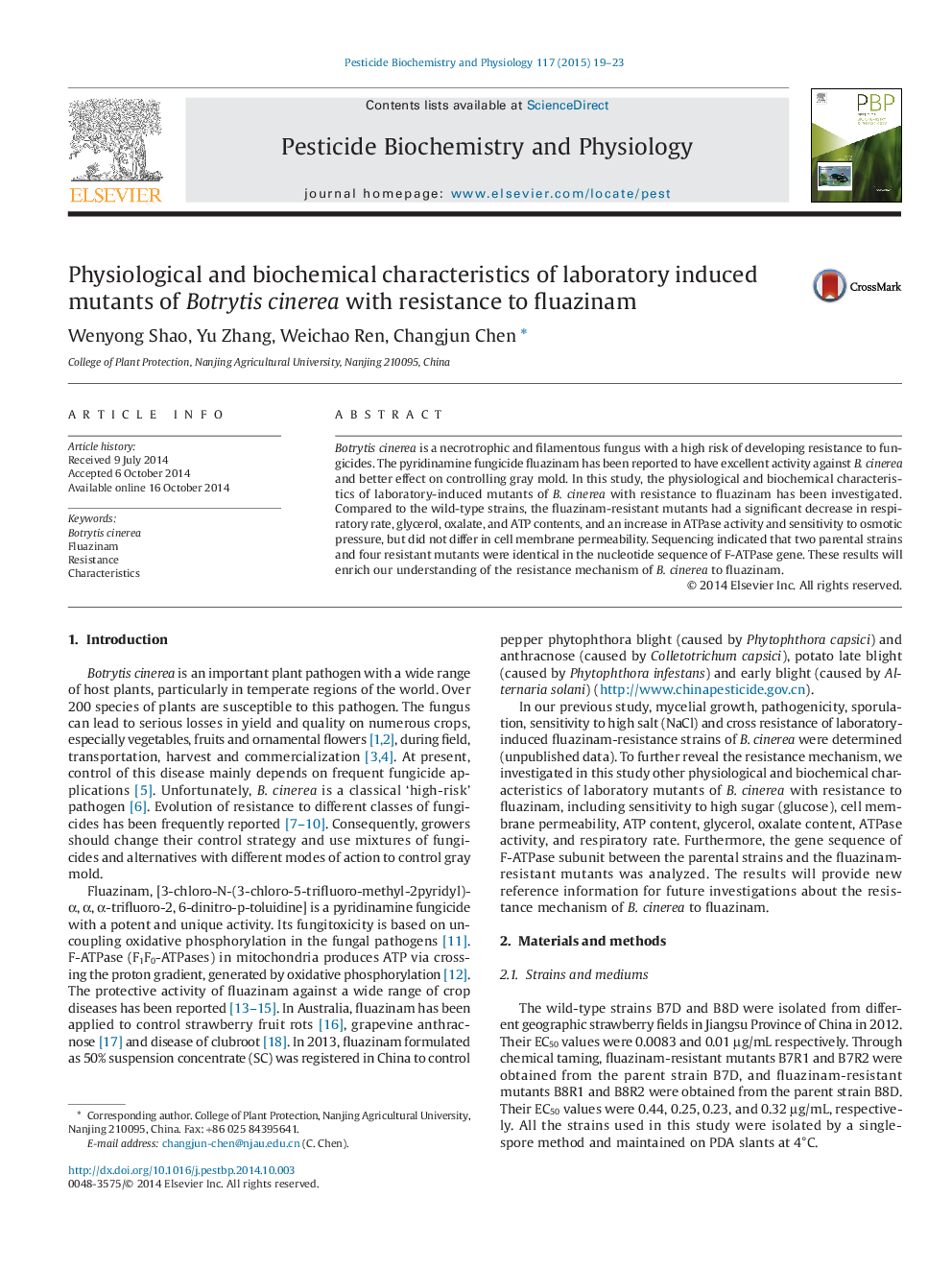| کد مقاله | کد نشریه | سال انتشار | مقاله انگلیسی | نسخه تمام متن |
|---|---|---|---|---|
| 2009222 | 1541782 | 2015 | 5 صفحه PDF | دانلود رایگان |

• Resistant mutants were sensitive to osmotic stress (high sugar).
• Respiratory rate are decreased in resistant mutants.
• Oxalate, glycerol, and ATP content are decreased in resistant mutants.
• ATPase activity is increased in resistant mutants.
• Sequence of F-ATPase was consistent between resistant mutants and parental strains.
Botrytis cinerea is a necrotrophic and filamentous fungus with a high risk of developing resistance to fungicides. The pyridinamine fungicide fluazinam has been reported to have excellent activity against B. cinerea and better effect on controlling gray mold. In this study, the physiological and biochemical characteristics of laboratory-induced mutants of B. cinerea with resistance to fluazinam has been investigated. Compared to the wild-type strains, the fluazinam-resistant mutants had a significant decrease in respiratory rate, glycerol, oxalate, and ATP contents, and an increase in ATPase activity and sensitivity to osmotic pressure, but did not differ in cell membrane permeability. Sequencing indicated that two parental strains and four resistant mutants were identical in the nucleotide sequence of F-ATPase gene. These results will enrich our understanding of the resistance mechanism of B. cinerea to fluazinam.
Graphical AbstractFigure optionsDownload as PowerPoint slide
Journal: Pesticide Biochemistry and Physiology - Volume 117, January 2015, Pages 19–23